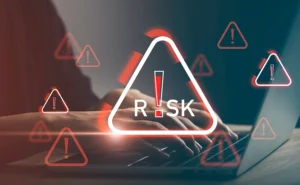
Incident Response Plan: What is it & Why is it important?
In today’s digital landscape, cyber threats like ransomware, data breaches, and phishing attacks are inevitable. Organizations that fail to prepare for these incidents risk financial loss, reputational damage, and operational downtime. An Incident Response Plan (IRP) is a structured strategy to detect, manage, and recover from cybersecurity incidents swiftly. This article explains what an IRP entails, its importance, and how to implement one effectively.
What is an Incident Response Plan (IRP)?
An Incident Response Plan is a documented framework that outlines how an organization identifies, responds to, and recovers from cybersecurity incidents. It provides clear procedures for containing threats, minimizing damage, and restoring normal operations. Key phases of an IRP typically align with industry standards like the NIST Incident Response Lifecycle or SANS Institute’s six-step process, which include:
- Preparation: Training teams, establishing protocols, and deploying tools.
- Detection & Analysis: Identifying and assessing potential threats.
- Containment: Isolating affected systems to prevent spread.
- Eradication: Removing the root cause of the incident.
- Recovery: Restoring systems and validating their security.
- Post-Incident Review: Analyzing the event to improve future responses.
Why is an Incident Response Plan Important?
- Minimizes Damage and Downtime
Cyberattacks can cripple operations, leading to revenue loss and recovery costs. A well-executed IRP ensures rapid containment, reducing the attacker’s dwell time (the period they remain undetected in a system). For example, IBM’s 2023 report found organizations with an IRP saved an average of $1.2 million compared to those without one.
- Maintains Compliance and Avoids Penalties
Regulations like GDPR, HIPAA, and CCPA require organizations to report breaches within strict timelines. An IRP ensures compliance by detailing notification procedures, helping avoid fines that can exceed $4 million under GDPR.
- Protects Reputation and Customer Trust
A data breach can erode customer confidence. With 59% of consumers avoiding companies post-breach (Deloitte), a transparent IRP demonstrates accountability and can mitigate reputational harm.
- Enhances Organizational Preparedness
Regular IRP testing (e.g., tabletop exercises) prepares teams to handle real-world scenarios calmly. It also identifies gaps in defenses, such as unpatched software or poor access controls.
- Supports Legal and Insurance Requirements
Courts and insurers increasingly scrutinize cybersecurity practices. A documented IRP proves due diligence, potentially reducing liability and securing favorable insurance terms.
Key Components of an Effective IRP
- Team Roles: Define responsibilities for the CSIRT (Computer Security Incident Response Team), including IT, legal, PR, and leadership.
- Risk Classification Matrix: Prioritize incidents based on severity (e.g., low-risk phishing vs. high-risk ransomware).
- Communication Plan: Specify internal/external reporting channels (e.g., regulators, customers).
- Tools & Technology: Deploy EDR, SIEM, and threat intelligence platforms for real-time monitoring.
- Post-Incident Review: Conduct a “lessons learned” analysis to refine the IRP.
Building Your Incident Response Plan
- Assess Risks: Identify critical assets (e.g., customer data, intellectual property) and potential threats.
- Develop Procedures: Create step-by-step guides for different attack scenarios (e.g., ransomware, insider threats).
- Train Stakeholders: Educate employees on recognizing phishing attempts and escalating incidents.
- Test & Update: Simulate attacks biannually and revise the IRP based on findings.
Testing and Maintaining Your IRP
- Tabletop Exercises: Simulate breaches to evaluate team readiness.
- Red Team/Blue Team Drills: Penetration testing to uncover vulnerabilities.
Conclusion
An Incident Response Plan is not a luxury—it’s a necessity in an era where cyberattacks cost businesses $4.45 million on average (IBM, 2023). By investing in a robust IRP, organizations can mitigate risks, comply with regulations, and maintain stakeholder trust. Start by assessing your current capabilities, involve cross-functional teams, and remember: preparation today prevents chaos tomorrow.
FAQs
Q: Can small businesses benefit from an IRP?
A: Absolutely. Cybercriminals often target SMBs due to weaker defenses. An IRP helps small teams respond efficiently, even with limited resources.
Q: How does an IRP differ from a Disaster Recovery Plan (DRP)?
A: An IRP focuses on cybersecurity incidents, while a DRP addresses broader disruptions (e.g., natural disasters). Both are vital for business continuity.
Q: What’s the biggest mistake organizations make with IRPs?
A: Failing to update the plan. Cyber threats evolve rapidly; annual reviews ensure your IRP stays relevant.
Q: Should we outsource incident response?
A: Many organizations partner with MSSPs (Managed Security Service Providers) for 24/7 expertise, especially if in-house resources are limited.
Latest
Blogs
Whitepapers
Monthly Threat Brief
Customer Success Stories
 USA
USA India
India APAC
APAC Middle East
Middle East Global
Global






 Facebook
Facebook Linkedin
Linkedin  X
X Youtube
Youtube








